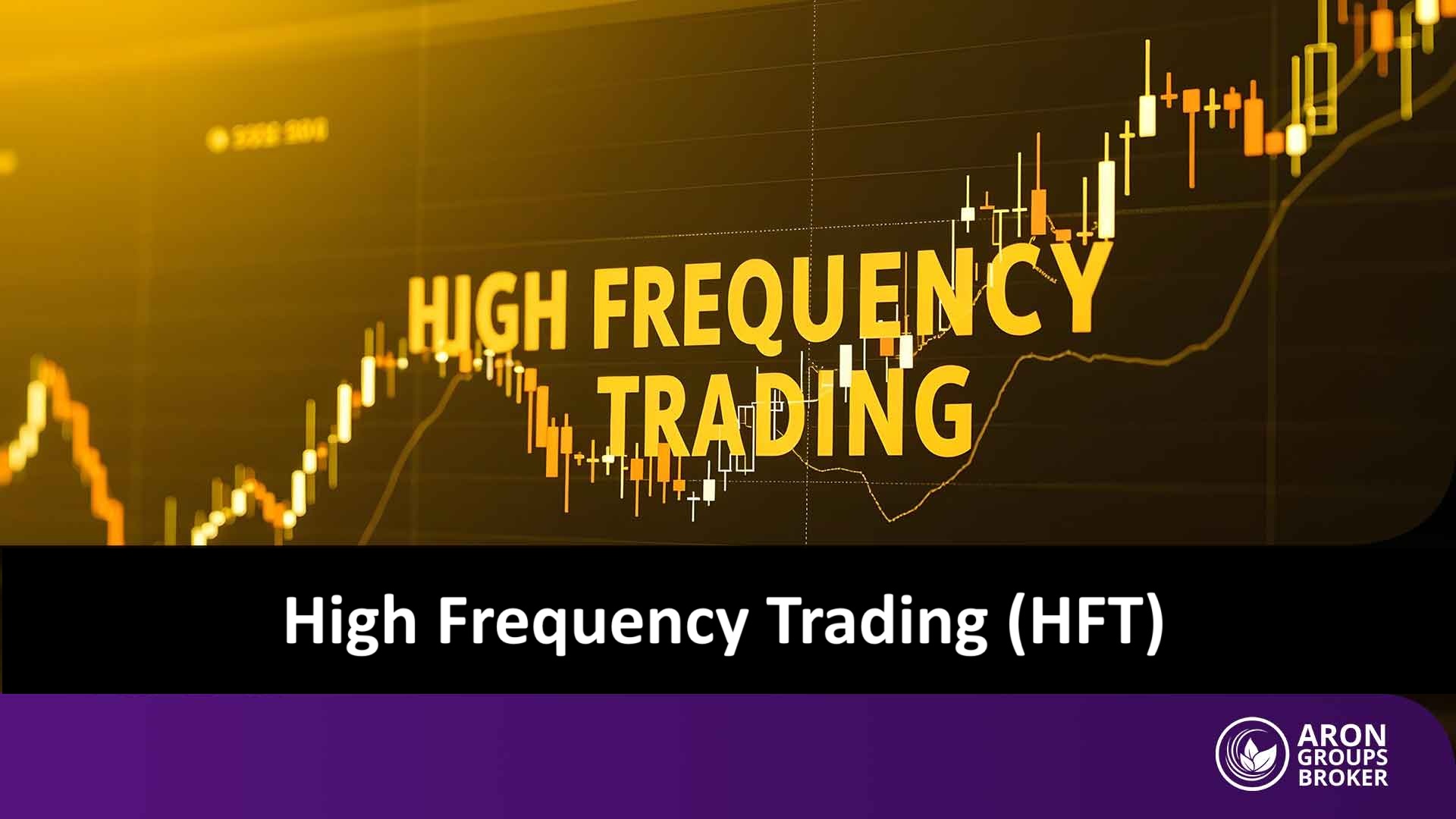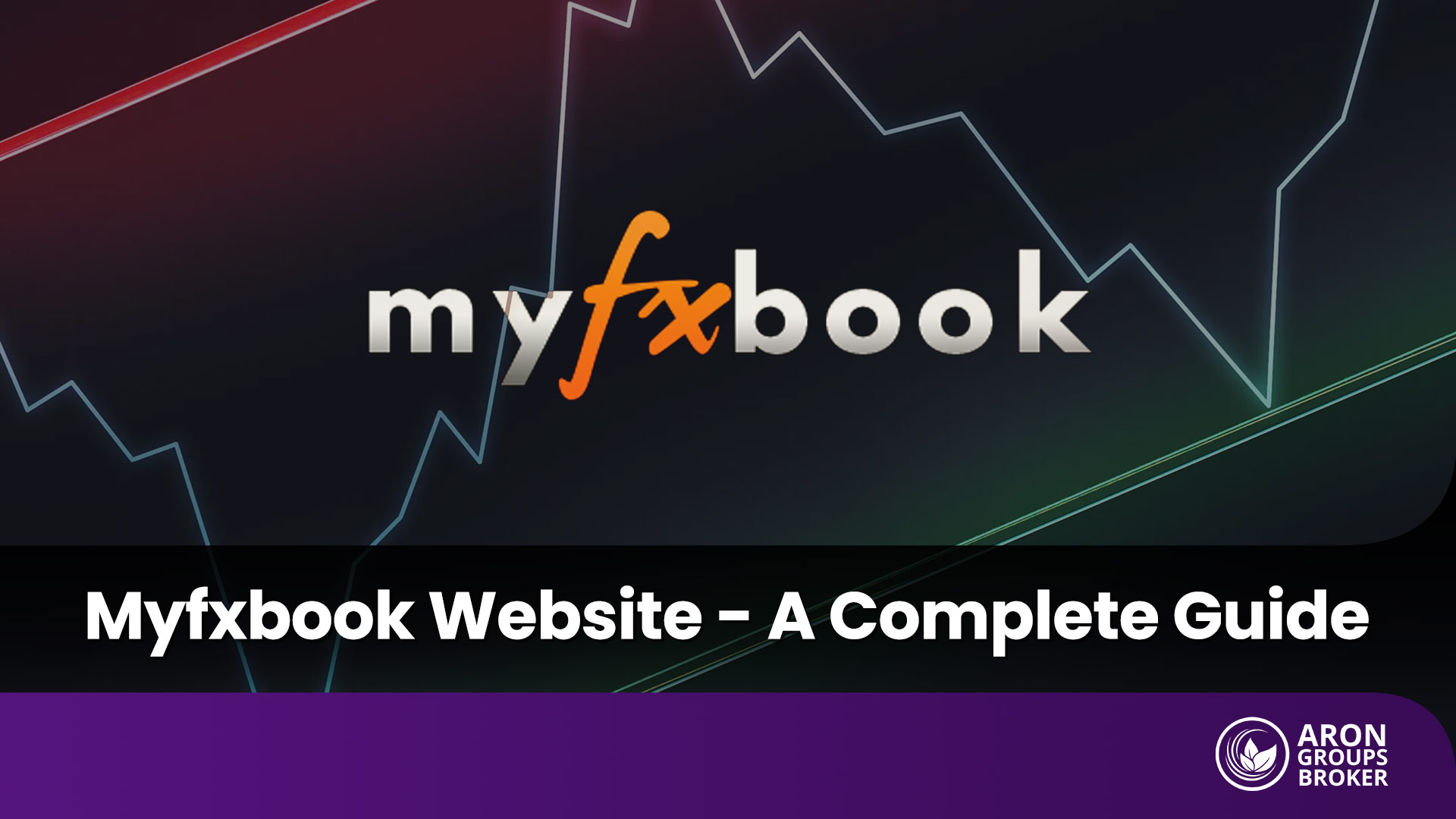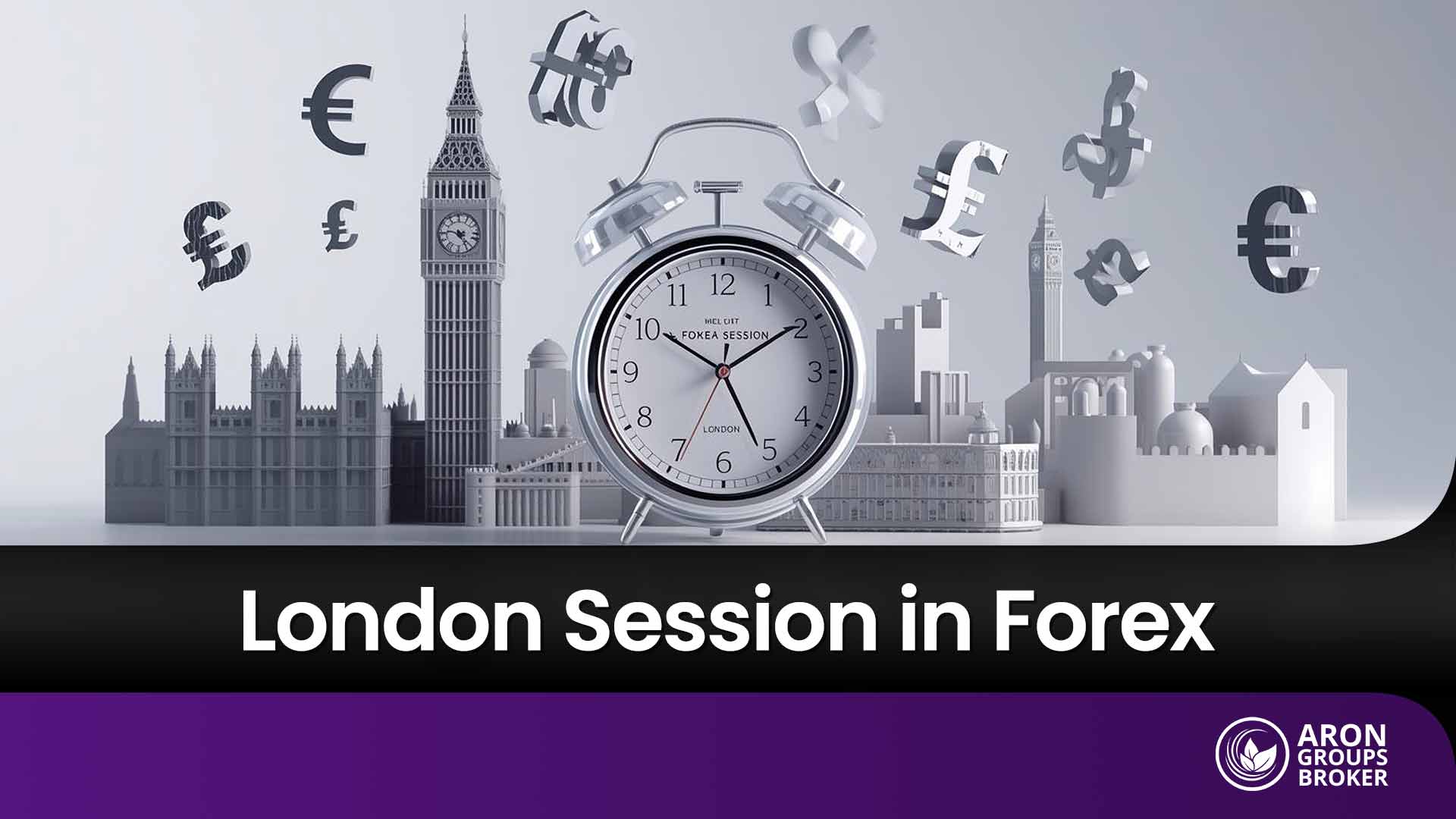High-frequency trading (HFT) is considered one of the most advanced trading strategies in financial markets. Because it requires highly specialised technical infrastructure, it is mainly used by large institutions and investment banks.
In this article, we examine what HFT is, which technologies it relies on, its main strategies, advantages, and challenges. We also review the role of major institutions in HFT and look at how advances in artificial intelligence may shape the future of this approach.
If this topic interests you, stay with us until the end of the article.

- Executing trades in milliseconds and microseconds, and placing thousands to millions of orders per day, are core features of high-frequency trading.
- HFT depends on ultra-fast algorithms, servers colocated near exchange data centres, and high-speed networks to minimise latency.
- HFT can increase market liquidity and narrow bid–ask spreads for traders, but its high complexity, risk of algorithmic errors, and regulatory challenges are among the main concerns in this field.
What Is High-Frequency Trading (HFT)?
High-Frequency Trading (HFT) is a technology-driven trading strategy in which financial transactions are executed in milliseconds or even microseconds using advanced algorithms.
In this approach, thousands to millions of orders are sent to the market each day to capture profit from extremely small price movements over the shortest possible time frame.
This strategy is mainly implemented by large financial institutions, hedge funds, and investment banks, and it requires highly sophisticated, ultra-fast technical infrastructure.

Key Characteristics of High-Frequency Trading (HFT)
The main features of HFT include:
- Extremely high speed: Trades are executed in fractions of a second.
- Very high trading volume: Thousands or even millions of trades can be executed in a single day.
- Reliance on complex algorithms: Only intelligent trading robots and computer programs can handle the decision-making and execution process.
- Need for advanced technical infrastructure: Without complex software and powerful computing systems, it is practically impossible to implement an HFT strategy.
Core Features of HFT (According to the SEC and ESMA)
| Feature | Description |
|---|---|
| Ultra-fast order execution | Orders are sent, modified, or cancelled in fractions of a second (milliseconds or microseconds). |
| Colocation | HFT firms place their servers directly next to exchange data centres to minimise network latency. |
| High order-to-trade ratio | Many orders are sent only to probe prices and are quickly cancelled, rather than being intended for actual execution. |
| Very short holding periods | Unlike traditional investors, positions are opened and closed very quickly (sometimes within a few seconds or less). |
| Full reliance on automated algorithms | Algorithms make trading decisions and execute orders automatically without human intervention, and are continuously updated and optimised. |
History and Evolution of High-Frequency Trading (HFT)
To understand high-frequency trading (HFT) more clearly, it is essential to look at its historical path and key milestones. HFT emerged from technological innovation and regulatory changes in financial markets and has evolved into one of the most important modern trading strategies.
The table below summarises the main stages in the development of HFT:
| Time Period | Key Event |
|---|---|
| 1990s | The emergence of electronic trading systems such as Nasdaq and Island ECN marked the end of manual order entry. |
| 2001–2005 | Development of internet infrastructure and fibre-optic networks; initial use of basic algorithmic trading. |
| 2007 | Implementation of Regulation NMS (Reg NMS) in the United States; competition for faster order execution intensified. |
| 2010 | The Flash Crash in US markets: a global wake-up call on the systemic risks associated with HFT. |
| 2020 onwards | Integration of artificial intelligence (AI), machine learning, and big data into advanced HFT trading algorithms. |
Overall:
- HFT is the joint product of technological progress, market-structure regulation, and intense financial competition.
- This trading model was initially designed to increase market liquidity and improve order execution, but over time, it has also raised regulatory challenges, algorithmic risk, and concerns about market fairness.
- The future of HFT is heavily dependent on advances in AI and computing power, and it remains one of the most complex and influential topics in global financial markets.
Technologies Used in High-Frequency Trading (HFT)
To make it possible to execute millions of trades within a few milliseconds, HFT relies on highly advanced technologies that maximise speed, accuracy, and efficiency. The most important components include:
- Ultra-fast trading algorithms;
- Servers located close to the exchange;
- High-speed, low-latency connections.
We’ll look at each of these in more detail.
Advanced Trading Algorithms
Fast algorithms are the beating heart of high-frequency trading. These advanced trading algorithms automatically analyse market data and execute trades at extremely high speed.
They:
- Continuously scan order books, price feeds, and market microstructure;
- Make buy/sell decisions based on predefined quantitative rules;
- Send, modify, and cancel orders in milliseconds or microseconds.
Without such algorithms, implementing an HFT strategy is practically impossible.

Colocation: Servers Close to the Exchange
Colocation means placing trading servers in the closest possible physical proximity to an exchange’s servers and data centres.
This setup:
- Minimises the delay (latency) in sending and receiving market data.
- Allows an HFT firm to react to price changes faster than competitors.
- Provides a structural speed advantage in markets where every microsecond matters.
High-Speed Connections (Low-Latency Networks)
High-speed connections in HFT refer to fibre-optic networks and ultra-fast communication protocols designed to transmit data in the shortest possible time.
Key elements include:
- Dedicated fibre-optic lines with optimised, direct routes;
- Network protocol optimisation to reduce overhead;
- Specialised, high-performance network interface cards (NICs) that handle data with minimal delay.
These components work together to ensure that orders reach the exchange and responses are received in microseconds.

Colocation in Practice
Colocation refers specifically to physically hosting a trading firm’s servers in the same data centre or as close as technically possible to the exchange’s servers. This greatly reduces data transmission latency.
Example:
Imagine an HFT firm in New York trading on Nasdaq.
- If its servers are located in a data centre outside the state, even with a fast connection, latency might be around 5-10 milliseconds.
- If the firm colocates its servers in the same data centre as the exchange, latency can drop to 5-10 microseconds, roughly a thousand times faster.
In markets where millions of dollars move every millisecond, this tiny time difference can translate into very large profits or losses.
Ultra-Low Latency Networks
To move data as fast as possible between distant financial centres (for example, between New York and Chicago), HFT firms use:
- Specially laid fibre-optic cables with more direct physical routes;
- Dedicated network equipment tuned for ultra-low latency;
- Private or leased lines built specifically for institutional trading needs.
These ultra-low latency networks are often designed and operated exclusively for HFT and other high-speed market participants.
Specialised Hardware (FPGA and Custom NICs)
HFT systems also make use of specialised hardware such as:
- FPGA (Field-Programmable Gate Arrays): Programmable chips that can process data streams directly on the hardware, bypassing the operating system.
- Custom NICs (Network Interface Cards): Tailor-made network cards that can process, filter, and even pre-analyse market data before it reaches the main CPU.
This architecture allows parts of the strategy, such as parsing order book updates or applying simple decision rules, to be executed in less than a microsecond.
Software, Platforms, and Programming Languages Used in HFT
High-frequency trading does not rely on powerful hardware and colocation alone. It also requires carefully chosen software stacks and programming languages that can:
- Process massive streams of data in fractions of a second.
- Execute and manage orders with minimal overhead.
- Maintain stability under extreme throughput.
In HFT, even a few microseconds of difference in execution speed can determine whether a strategy is profitable or unprofitable.
Common Programming Languages in HFT
- C++:
The most widely used language in HFT is C++ due to its extremely high execution speed and fine-grained control over memory and hardware. Most core HFT engines and latency-critical components are written in C++. - Java:
Used where a balance between speed and development productivity is needed, especially for data management, messaging systems, and interfacing with APIs. - Python:
Although slower than C++, Python is heavily used for research, backtesting, and prototyping. Many firms first design and test their algorithms in Python, then re-implement the final version in C++ for live trading. - R and MATLAB:
Primarily used for statistical analysis, modelling, and strategy testing rather than for live, real-time execution.
Specialist HFT Platforms and Software
- KDB+/q:
A high-performance time-series database and query language widely used for storing and analysing real-time and historical market data. - FIX Protocol (Financial Information Exchange):
An industry-standard communication protocol for fast, reliable transmission of orders and trade-related messages between traders and exchanges. - QuantConnect and AlgoTrader:
Professional and often open-source algorithmic trading platforms that support multiple languages (such as Python and C#) for developing and backtesting strategies. - MetaTrader (MT4/MT5):
While primarily used in retail Forex trading, some firms deploy heavily optimised versions or bridge solutions to use it in faster, semi-automated, or experimental setups.

In HFT, combining C++ for execution, Python for research, and specialized data platforms creates ultra-fast, large-scale trading, where the right tools often make the difference between profit and loss.
Common Strategies in High-Frequency Trading (HFT)
In high-frequency trading, algorithms rely on strategies designed to be profitable over extremely short time frames and at very high speed. In this section, we’ll look at some of the most important HFT strategies:
- Market making;
- Arbitrage;
- Maker-taker strategies;
- Event-based strategies;
- Structural strategies.
Market Making
Market making is one of the most basic and widely used strategies in HFT. In this approach, the trading algorithm simultaneously places bid (buy) and ask (sell) orders close to the current market price and earns a profit from the difference between the two prices (the spread). This activity also increases market liquidity.
Key characteristics:
- Low profit per trade but very high trade frequency.
- Automatic execution of orders within milliseconds.
- Lower risk compared to directional strategies.
- More stable in low-volatility markets.
Example:
Imagine an HFT algorithm in the EUR/USD market that simultaneously places:
- A buy order at 1.0850;
- A sell order at 1.0851.
If other market participants fill both orders, the algorithm earns a profit of 0.0001 USD per unit. This process can be repeated thousands of times a day, resulting in a significant cumulative profit.
Arbitrage
Arbitrage is a well-known strategy that exploits short-lived price differences for the same asset across different markets or trading venues. In HFT, this strategy is executed at extremely high speed so that these discrepancies are detected and traded on before they disappear.
Types of arbitrage in HFT:
- Inter-exchange arbitrage:
Exploiting price differences for the same asset listed on two different exchanges. - Triangular arbitrage in Forex:
Taking advantage of inconsistencies in exchange rates among three currency pairs. - Statistical arbitrage:
Using quantitative models to identify temporary price deviations between correlated assets.
Example:
Suppose Apple stock is trading at $170.00 on the New York Stock Exchange and at the equivalent of $170.05 at the same moment on the London market. An HFT algorithm can, in less than a second, buy the stock in New York and sell it in London, capturing a profit of $0.05 per share.

In statistical arbitrage, when the prices of two historically correlated assets diverge from their usual relationship, the algorithm enters a trade by buying the cheaper asset and short-selling the more expensive one. As prices revert to their equilibrium relationship, the strategy realises a profit.
Maker-Taker Strategy
In financial markets, a maker is a trader who provides liquidity by placing a limit order (an order with a specified price) into the order book.
A taker, in contrast, is a trader who consumes liquidity by:
- Submitting a market order, or
- Placing a limit order that immediately matches an existing order in the book.
Complex HFT algorithms typically use a combination of maker and taker behaviour. They both:
- Send orders that provide liquidity (maker role), and
- Execute orders that consume liquidity when necessary (taker role).
In this way, they can:
- Earn the spread as a market maker, and
- Benefit from rapid price movements as a liquidity taker.
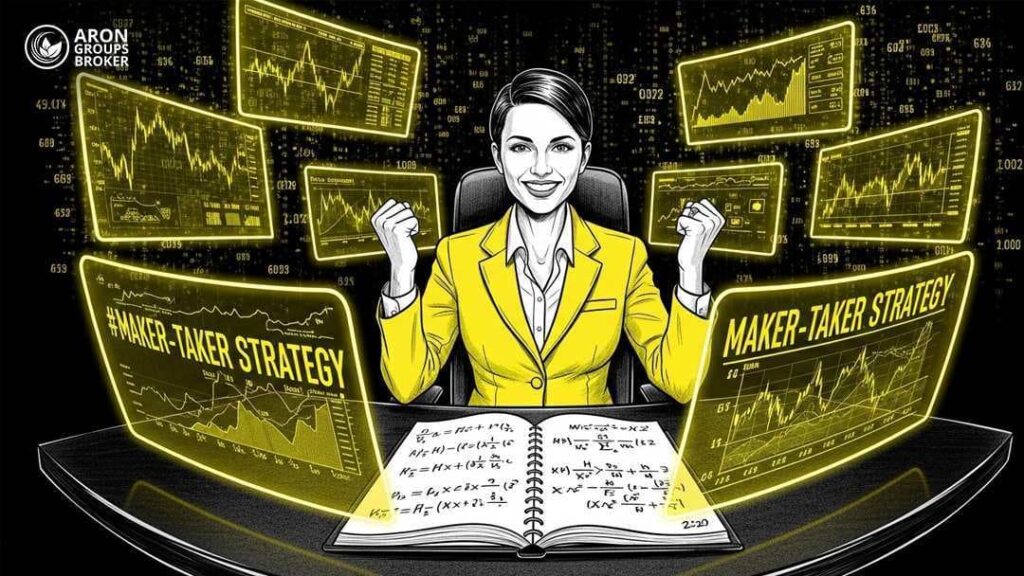
Event-Based Strategies (Event Arbitrage)
In event-driven HFT strategies, algorithms are programmed to react within fractions of a second to major economic news, such as:
- Unemployment data;
- Central bank policy decisions;
- Inflation releases.
As soon as the news is published, the bots immediately parse the information and submit buy or sell orders well before human traders can react.
Example:
If the unemployment rate comes out lower than expected, an algorithm might instantly start buying US dollars. The key advantage in news-based HFT strategies is precisely this reaction speed.
Structural Strategies (Structural Arbitrage)
In structural arbitrage, algorithms exploit technical inefficiencies in the market’s microstructure, such as:
- Delays in order execution.
- Differences in platform speed.
- Variations in order-priority rules across exchanges.
For example, if one exchange processes orders slightly more slowly, an HFT algorithm can take advantage of that delay and “step in front” of slower participants. These strategies are mostly used by firms that have direct access to exchange infrastructure, for instance, by collocating their servers next to the exchange’s data centre.
Who Are the Main Players in High-Frequency Trading?
High-frequency trading (HFT) requires heavy investment in technological infrastructure, so large, professional market participants largely dominate it. The main players include:
1. Hedge Funds
Hedge funds, aiming for high returns and active risk management, allocate a significant share of their strategies to algorithmic trading and HFT.
By using specialised teams, advanced data, and low-latency infrastructure, they can gain an edge over other market participants.
2. Proprietary Trading Firms
Proprietary trading firms (prop firms) trade using their own capital and, because they do not manage client money, have greater flexibility in designing and implementing trading strategies.
They are often at the forefront of technological innovation and the development of new trading algorithms, and they provide a substantial portion of market liquidity.
3. Investment Banks
Large investment banks, in addition to offering market-making services to institutional clients, use HFT to execute orders quickly and improve the efficiency of their trading operations.
Their direct access to market infrastructure and the large volume of client and proprietary orders give them a strong competitive advantage.
4. Specialist Market-Making Firms
These firms are dedicated liquidity providers. Using HFT, they continuously place buy and sell orders and profit from the bid–ask spread.
Their activity helps maintain tight spreads and smoother trading conditions in many markets.
5. Large Asset Management Firms
Although their core focus is long-term investing, some large asset managers use HFT for a portion of their portfolios to exploit short-term market opportunities and improve execution quality.
Overall, the HFT ecosystem is dominated by institutions with access to substantial capital, cutting-edge technology, and highly specialised teams, a combination that makes entry for smaller players difficult and competition extremely intense.
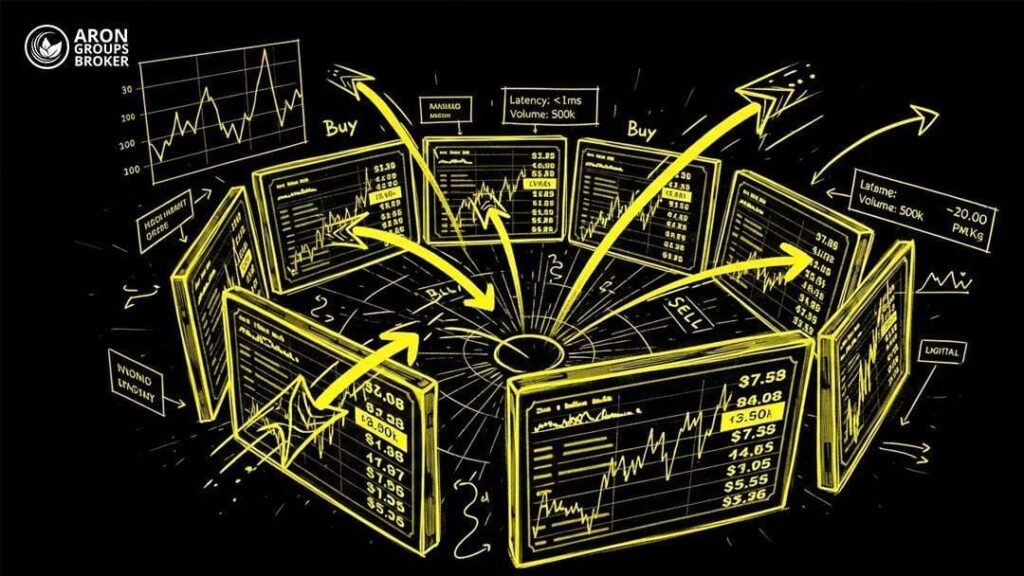
The Role of Large Institutions in High-Frequency Trading (HFT)
Large institutions play a critical and highly influential role in high-frequency trading (HFT) because they have access to substantial resources and advanced technologies that allow them to operate in the market with very high speed and precision. Among other things, these firms:
- Increase market liquidity by sending a large volume of limit orders (maker orders) to the market.
- Can, through the size and speed of their orders, create short-term price fluctuations and play a key role in price formation and overall market behaviour.
- Reduce market risk for other traders by increasing liquidity.
- As technology leaders, intensified competition in algorithmic trading and execution speed, driving innovation and progress in financial markets.

Intense competition among large institutions to innovate in financial markets improves market efficiency and reduces costs, but it can also increase complexity for retail traders and create additional regulatory challenges.
How Does High-Frequency Trading (HFT) Work in the Forex Market?
The foreign exchange (Forex) market, as the largest and most liquid financial market in the world, is an ideal environment for deploying HFT strategies. High speed, massive trading volume, and momentary price differences between exchanges and banks create conditions in which HFT can play a major role in enhancing liquidity and market efficiency.
1. The Role of HFT in Providing Liquidity for Currency Pairs
Firms active in high-frequency trading effectively act as automated market makers by placing thousands of buy and sell orders within fractions of a second. This activity leads to:
- Narrower spreads (the difference between bid and ask prices);
- Faster execution of large orders;
- Higher liquidity in currency pairs, especially major pairs such as EUR/USD and GBP/USD.
As a result, even retail traders indirectly benefit from the presence of HFT in Forex, because they receive better prices and experience smoother order execution.
2. Currency Arbitrage Strategies in HFT
One of the most widely used HFT strategies in Forex is currency arbitrage. In this approach, algorithms identify momentary discrepancies in exchange rates and profit from them.
- Interbank arbitrage:
When the rate of a currency pair differs between banks or exchanges, algorithms immediately buy in the cheaper market and sell in the more expensive one. - Triangular arbitrage:
This strategy exploits inconsistencies between three related currency pairs. For example, if the rates for EUR/USD, USD/JPY, and EUR/JPY are not aligned, the algorithm can execute a chain of trades in less than a second to lock in a risk-free profit.
The combination of high Forex liquidity and the extraordinary speed of HFT has turned this market into one of the primary arenas of competition between trading algorithms. Although these strategies are not practically accessible to retail traders, their presence contributes to better liquidity and lower transaction costs across the entire market.
Advantages and Challenges of High-Frequency Trading (HFT) for Markets and Traders
According to a CAF Institute article, high-frequency trading (HFT) is a highly influential phenomenon in financial markets, with its own specific advantages and challenges for both markets and traders. We’ll look at these aspects in turn.
Advantages and Challenges of HFT for Markets
Key advantages of HFT for markets include:
- Increased liquidity through the rapid and repeated submission of orders
- Narrower bid–ask spreads as a result of higher order volume
- Greater market efficiency, as prices react faster and more accurately to new information
- Reduced short-term price volatility thanks to improved market liquidity
Key challenges of HFT for markets include:
- Complex HFT algorithms and ultra-fast trading make markets more confusing and less intuitive for typical investors.
- Aggressive HFT strategies can detect and trade ahead of large institutional orders, increasing short-term price volatility.
- During periods of extreme market stress, HFT may amplify systemic risk by accelerating trading speed and volume.
- Some HFT strategies may facilitate abusive or manipulative practices, such as spoofing, which are illegal.
- Large HFT firms with deep resources may tilt market dynamics in their favour, making it harder for smaller traders to compete.

Advantages and Challenges of HFT for Traders
Key advantages of HFT for traders include:
- Access to better pricing thanks to higher liquidity and tighter spreads.
- More opportunities to profit from short-term price movements.
- Lower transaction costs as spreads narrow and competition among liquidity providers increases.
Key challenges of HFT for traders include:
- Human traders cannot match the speed and precision of HFT algorithms
- When HFT systems send and execute orders in milliseconds, ordinary traders may miss profitable opportunities
- Entering the HFT space requires heavy investment in technology and advanced infrastructure, which is not feasible for most individuals
- Many HFT strategies are highly complex and opaque, making them difficult for typical traders to understand
| Aspect | Advantages | Challenges |
|---|---|---|
| Markets | Creation of high liquidity, tighter spreads, improved market efficiency, and reduced short-term volatility. | Increased complexity, potential systemic risk, risk of market manipulation, and an imbalance of power in favour of large players. |
| Traders | Better access to optimal prices, more trading opportunities, tighter spreads, and lower transaction costs. | Inability to compete with algorithms, loss of opportunities to faster systems, high technology costs, complexity of HFT strategies, and greater market opacity. |
Dark Pools and Their Relationship with HFT
One of the lesser-known but highly important topics in financial markets is dark pools. These are private and non-transparent trading venues used primarily by large financial institutions (such as investment banks and hedge funds) to execute very large orders without immediately impacting prices in the public markets.
Why Were Dark Pools Created?
When a large institution wants to buy or sell securities worth millions of dollars in the open market, its order quickly attracts attention from other market participants and can cause sharp price movements.
To avoid this, such institutions route their trades through dark pools, where orders are matched anonymously.
Dark pools enable them to:
- Reduce price impact: Large orders are executed without drawing attention in public order books.
- Increase execution efficiency: Overall transaction costs can be reduced.
- Maintain anonymity: Other traders do not easily discover the true intentions of large investors.
The Role of HFT in Dark Pools
High-frequency trading (HFT), which is based on ultra-fast algorithms, has a complex interaction with dark pools:
- Early access to liquidity: Some HFT firms act as liquidity providers inside dark pools to absorb large block orders.
- Use of micro-level information: Although dark pools are anonymous, HFT algorithms can sometimes detect patterns in order flow and use them to execute profitable trades.
- Market fairness concerns: Critics argue that the presence of HFT in dark pools can create an unfair advantage, because high-speed firms may effectively gain earlier access to information about large orders.
Dark pools are tools for hiding large trades and reducing price impact, but their combination with HFT can have two major consequences:
- On the one hand, they provide additional liquidity for large orders.
- On the other hand, they increase the risk of abuse, opacity, and perceived unfairness in trading.
For these reasons, regulators in recent years have paid special attention to HFT activity in dark pools, aiming to preserve a balance between market efficiency and transparency.
Regulations Governing High-Frequency Trading (HFT)
Regulation of high-frequency trading seeks to balance the benefits of advanced technology with the need to maintain a fair and transparent market. While each country or market has its own specific rules, the regulatory focus typically includes:
- Registration and oversight of trading algorithms.
- Prevention of market manipulation.
- Requirements for transparency and data reporting.
- Risk controls and system robustness.
Example (Germany)
In Germany, HFT firms must:
- Obtain a licence to operate.
- Ensure the effectiveness and robustness of their trading systems.
- Implement proper risk management.
- Respect rules on order-to-trade ratios and minimum tick size.
- Refrain from trading practices that constitute market manipulation.
(Source)
Example (United States)
In the United States, regulation focuses on:
- Increasing transparency and oversight of HFT activity;
- Updating the definitions of “dealer” and “government securities dealer”;
- Requiring central clearing of transactions in government securities.
Example (European Union)
In the European Union, through the review of MiFID II and MiFIR and the introduction of the new Capital Markets Union (CMU) strategy, steps have been taken to:
- Modernise market structure;
- Support the use of new technologies;
- Improve the functioning and resilience of European financial markets.

The Future of High-Frequency Trading with Advances in Artificial Intelligence (AI)
As also noted by leadinnovationz, artificial intelligence is fundamentally redefining how high-frequency trading (HFT) is conducted. With its ability to process massive amounts of data, generate real-time predictions, and execute orders at extremely high speeds, AI is reshaping trading strategies and deeply impacting market behaviour.
The most important effects of AI in this area include:
- Unmatched data processing speed:
AI algorithms can process huge volumes of data, such as price fluctuations, order book dynamics, and economic indicators, at speeds far beyond human capability. They detect patterns and relationships in real time, creating new trading opportunities. - Real-time market forecasting:
AI does not rely solely on historical data. It also analyses current market conditions and even social media sentiment to anticipate the next market move and rapidly adjust algorithms to exploit emerging opportunities. - Latency reduction:
In high-frequency trading, milliseconds matter. AI-based systems minimise data processing time and trade execution latency, enabling faster decision-making and capturing short-lived price discrepancies. - Automated decision-making:
AI systems can make independent trading decisions and continuously learn from new data. This improves the accuracy and reliability of trades without requiring direct human intervention.
Conclusion
High-frequency trading, powered by advanced technology, plays a vital role in enhancing liquidity and efficiency in financial markets. However, the complexity and risks associated with HFT require robust oversight and appropriate regulation.
As artificial intelligence continues to advance, the future of HFT will likely bring new opportunities to further increase the speed and precision of trading. At the same time, maintaining a balance between innovation and responsibility will be essential to preserving the integrity and stability of financial markets.












